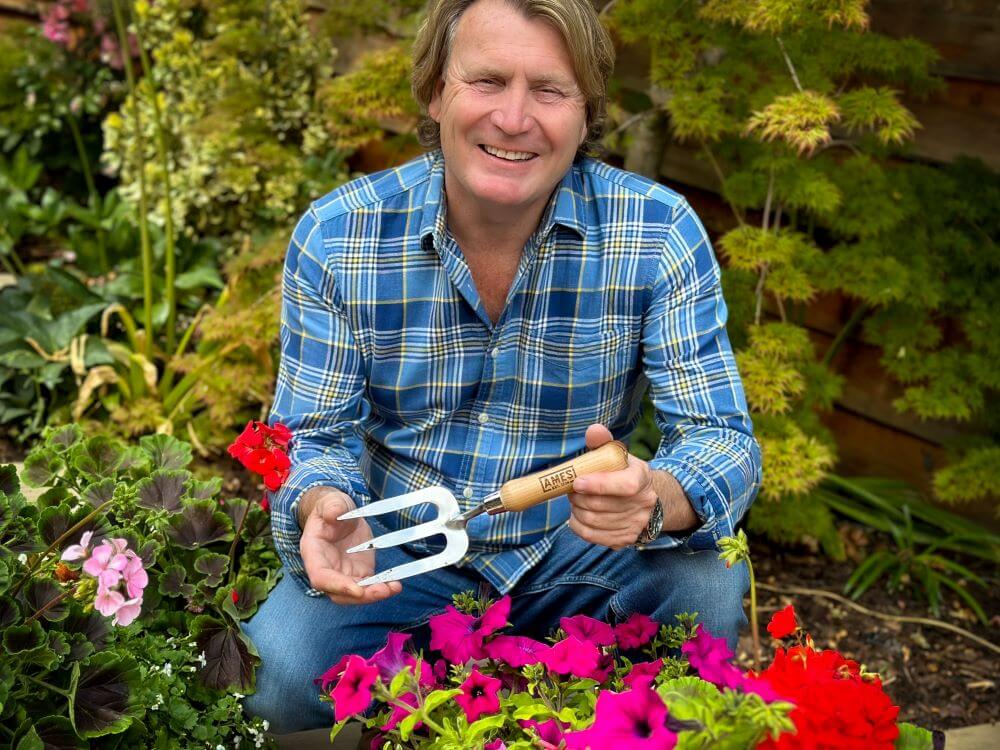Producing a fine tilth over the surface of your soil is a great practice when you’re preparing your garden for planting and sowing in spring. Ensuring your soil is in good condition will do the world of good for your garden and your plants.
In this blog, find out why a fine tilth is so important before planting and sowing in your garden, when is best to do this, and what tools and methods you should use to do it too.
What is a tilth, and why is it important?
The word ‘tilth’ technically refers to the condition of the soil, and its condition for sowing seeds. The word comes from the Old English ‘tilian’, which means ‘to strive, or labour’. When you till the earth, you are labouring to improve the tilth, and preparing it for growing plants. This benefits the quality of the soil, benefitting drainage and the potential for root penetration from emerging seedlings. The fine consistency allows young seedlings easy access to air, water, and nutrients by more easily being able to spread throughout the surface of the soil.
If you are planning to grow plants, including fruit and vegetables by seed this year, improving the tilth of your soil is essential. By going through the process of creating a fine tilth, you can remove stones, twigs, and any other disruptive matter from the surface of the soil, providing your seeds with a perfect environment to grow healthily. It also breaks up any large clods of soil, resulting in a fine dusting of soil across the surface resembling a crumblike consistency.
The best time to get your soil tilth in perfect condition is just before you plan on sowing your seeds, preferably on the same day. When you sow your seeds will depend on what you are growing, but the start of spring in March and April are generally when most sowing begins. Choose a dry day, preferably after a few days with little or no rain. This will make your soil much easier to work with, and more likely to break down into the finest possible consistency.
How to create a tilth on the surface of your soil
There are a few different ways and tools that you can use to create a plant tilth on your soil effectively, and quickly, depending on what area of the garden you’re working on.
For small spaces such as raised beds, containers and pots, a hand fork may be all you need to produce a perfect tilth for sowing. Even if you’re sowing seeds in shallow trays indoors on a windowsill or in your greenhouse. AMES Tools Stainless Steel Hand Fork is a great option for jobs like this. You can intimately and directly break up any large clumps of soil you see and remove any stones effectively using the broad tines. Then, you can drag the back of the tines across the surface of the soil, using the flat edge, to smoothen out the surface, ready for sowing.



Another great hand tool to use for creating a fine tilth for sowing, is the AMES Tools Hand 3 Prong Stainless Steel Cultivator. This, like the hand fork, is a great tool for working up-close with the soil, spotting large clumps to address, and any stones, twigs, roots, or weeds that need to be removed to create an ideal sowing environment. By using a swinging motion, bury this cultivator into the surface of the soil, and then drag it through the soil towards you. This will break up the top layer of the soil, tilling it gradually into a finer and finer consistency with every pass you do.


To finish off your tilth before sowing, and to ensure it is as fine as possible, I suggest you rake over the surface with AMES Tools Carbon Steel Flat Tine Leaf Rake. The straight edge produced by the end of the tines gives you a wide area to cover when dragged over the soil, acting like a hairbrush, and filtering out any remaining lumps or bumps in the tilth. The strong, Carbon Steel tines will withstand the force of catching any stones and can even break up soil clumps with some applied force. Once you have as fine a tilth as possible, you can then use the rake to create seed drills. Use the edge of the tines, dragging the rake along so the tines are vertical rather than horizontal. By pulling your rake towards you like this, you can create level and evenly spaced channels in which to sow your seeds, keeping them evenly spaced.



This collection of tools can perfectly prepare your soil for seed sowing. Ensure your soil is in as ideal a condition for your seeds and seedlings by creating a fine tilth with these pieces of equipment, and you can enjoy watching them grow in no time.



